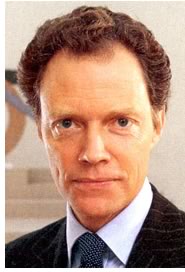
A leading figure in refining the American public's appreciation for art and architecture died June 17. J. Carter Brown, Hon. AIA, director of the National Gallery of Art from 1969 to 1992, jury chair for the Pritzker Prize since its inception, and chair of the Commission of Fine Arts from 1971 until his resignation due to his health on May 30, succumbed to cancer at Boston's Brigham and Women's Hospital. He was 67.
"J. Carter Brown was a faithful advocate for shaping our environments so our experiences will be elevated and enriched," said AIA Executive Vice President/CEO Norman L. Koonce, FAIA. "His motives were from a generous heart and his understanding of the influence of architecture insightful. He is a role model for our learning to foster an attitude of sharing best practices that inspire public well-being through thoughtful design of the places in which we live, work, play, and worship."
In tribute, AIArchitect turns to Charles H. Atherton, FAIA, secretary of the Commission of Fine Arts, who wrote the following highlights of Brown's contributions to architecture.
 Carter
Brown Shared the Vast Experience He So Readily Absorbed
Carter
Brown Shared the Vast Experience He So Readily Absorbed
J. Carter Brown's contribution to architecture was very broad. Although
certainly not confined to Washington, D.C., the evidence of his far-reaching
influence is most easily witnessed here. More than anyone in this city,
he paved the way for fresh, modern architectural solutions, starting with
I.M. Pei's National Gallery East Building on the Mall and continuing to
the present day, notably with the National Museum of the American Indian
now under construction. You can give Carter Brown credit for opening the
door for something as bold as Frank Gehry's proposed addition to the Corcoran
Gallery.
As chairman of the jury for the Pritzker Prize since its inception, he visited every single building of the persons who had been nominated. He chased down these buildings all over the world. And he absorbed that experience. One result was the extraordinary opportunity for him to bring all kinds of fresh, new architectural ideas back with him to the Commission.
I think he raised everybody's consciousness in this city. People became aware of design a great deal more in his administration as chairof the Commission of Fine Arts. And when people appeared before the Commission, they sure as hell did their homework, which further raised the bar for the quality of architecture.
Everybody respected Carter's knowledge of architecture and his passionate love for it. Just as you don't want to disappoint when you come to a commission like this, you sometimes also want to be cheered on. And Carter did that as he invoked a kind of challenge to architects appearing before the Commission. You could sense it in their presentations and designs. He brought out the best in a lot of architects when they came to this city, and that's very hard to do in a bureaucratic framework.
The architectural experience was a narrow slice of all of the fine arts that fell under Carter Brown's influence. Yet it was important to him, just as this city was important to him. Everything that affected it, including the landscape, the planting of trees and the building heights were a passionate interest of his.
In the 1970s there were some real threats to lifting the building heights in Washington. He fought like a tiger for maintaining the building-height limits and was one of the biggest opponents of Philip Johnson's great Port America Tower down near the Woodrow Wilson Bridge, which would have been 750 feet high.
Carter used the wonderful sense of humor he had even when he was destroying projects with a few gentle words. In the testimony on Capitol Hill against the Port of America, he explained how Philip Johnson had said to him, "When you fly into Washington, the first thing you'll see is the Washington Monument, then you'll see the Mason's Washington Monument in Alexandria, and then my monument." That little turn of humor—pointing out the high company Philip put himself in—did a lot to win people over to Carter's side.
That is the J. Carter Brown I will remember. Exceedingly bright, always curious, and ever ready and able to use his wit and humor to add an edge to a discussion or soften one.
Copyright 2002 The American Institute of Architects. All rights reserved.
![]()
|
|
|